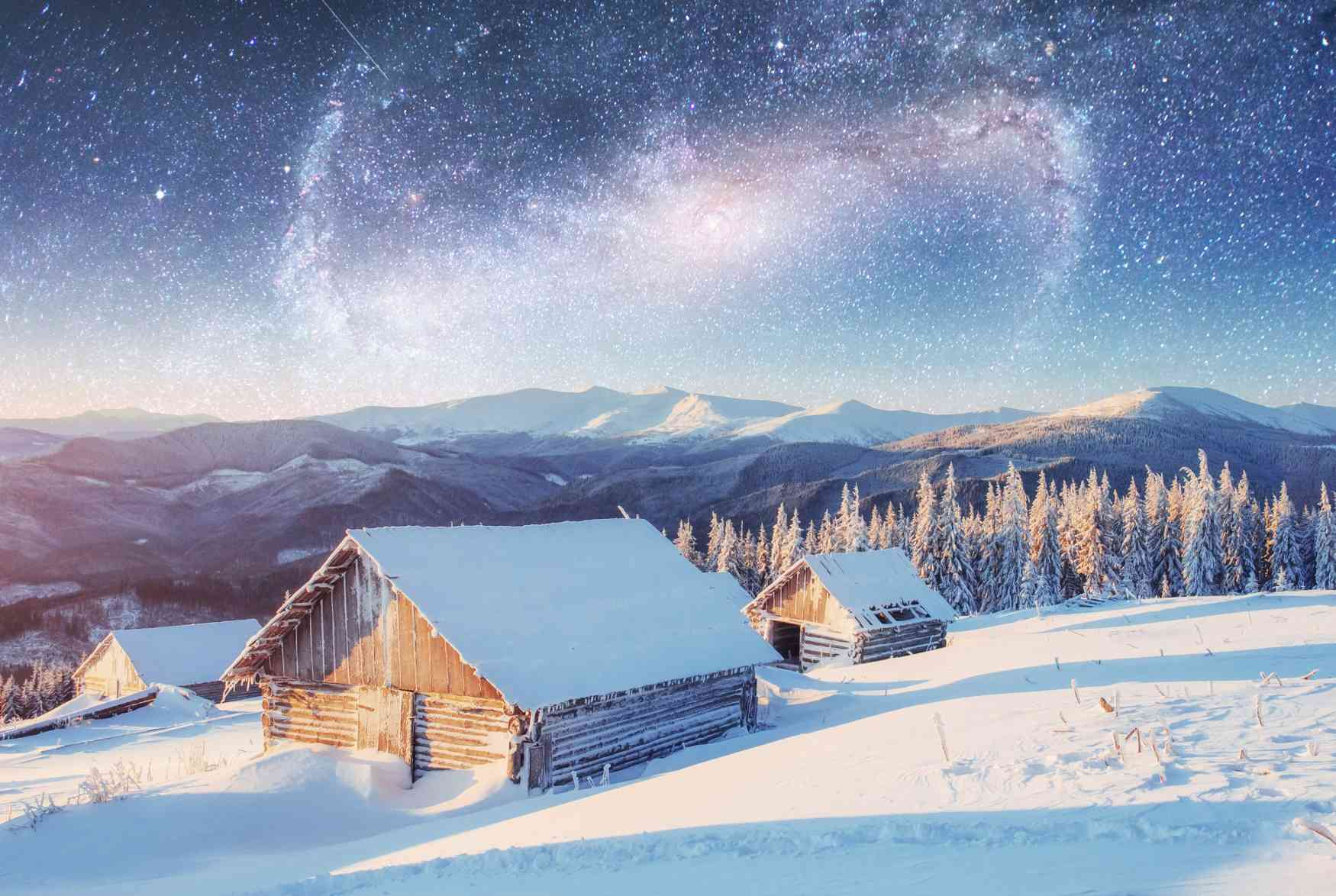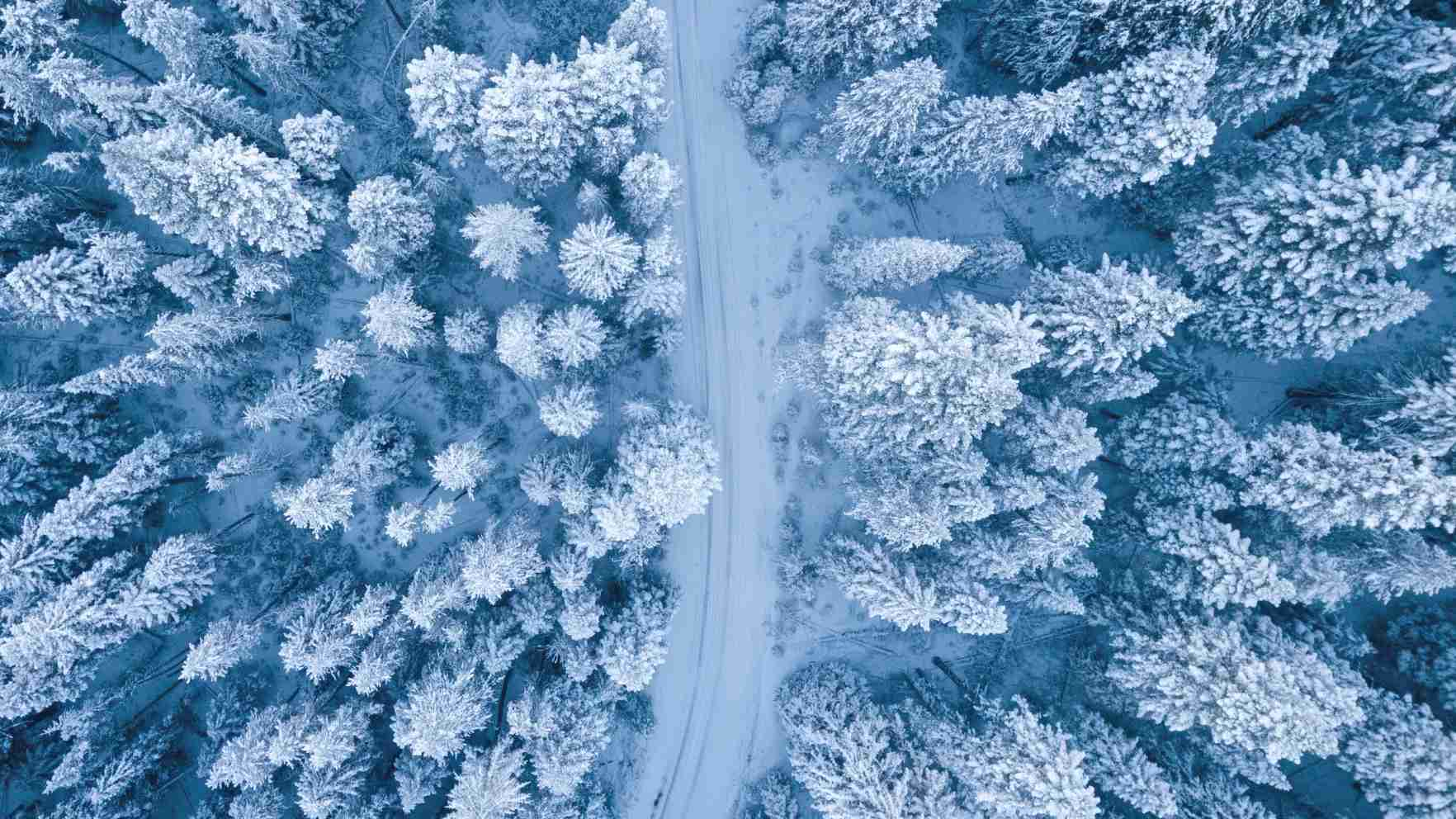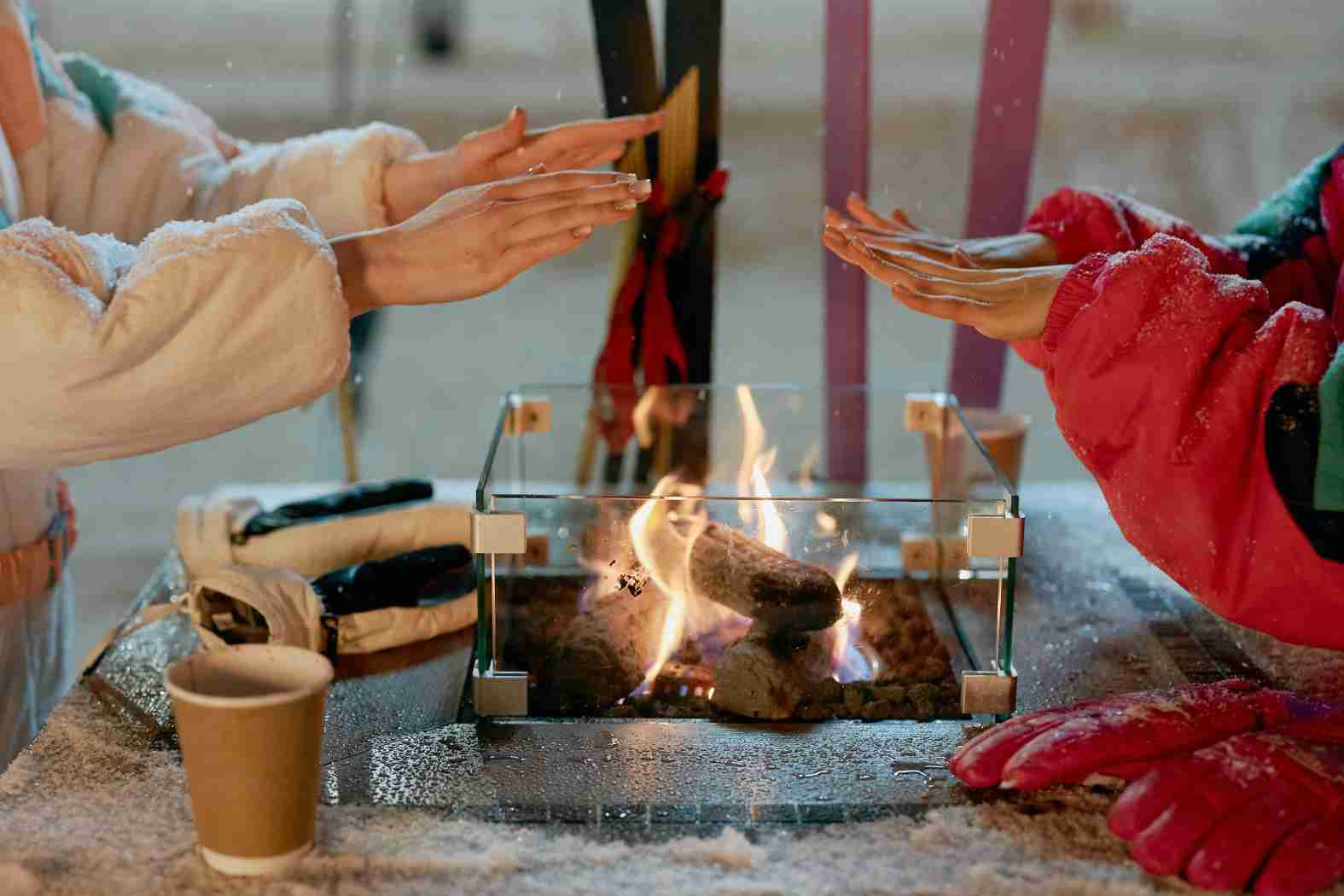All About Winter: Seasonal Cycle and Snow

As we all know, the year is divided into seasons, which depend on changes in climate and the number of daylight hours. The seasons are different in each region of the planet; however, in the Northern Hemisphere, there are four distinct seasons: spring, summer, autumn (or pre-winter), and winter.
That said, what is winter? Let's get to know a bit about the colder season of the year.
Winter is one of the four seasons in the Northern Hemisphere of the equator, which occurs from the beginning of December to the beginning of Spring (or the beginning of March). It is the coldest season because it is the point at which the Northern Hemisphere of the Earth focuses away from the Sun.
Additionally, it has the fewest daylight hours.
Winter is the season that comes after autumn and before Spring in the cycle of the seasons. Depending on where you reside, it frequently has a colder climate and shorter days.
Moreover, winter is also anticipated to have a high chance of snow! Since it sits between autumn and Spring, winter should be visible as the immediate inverse of summer. This falls into logic since Spring and fall have equinoxes, and summer and winter have solstices.
So, what happens during the winter season? For one, many changes can be seen in plants as the deciduous trees grow fruitless. Animals that are cute and small tend to hibernate to remain warm and endure the cold weather. Of course, its most obvious feature is the snow and freezing temperatures.
1.1 When Does Winter Occur
In the Northern Hemisphere, winter officially occurs from December to March. According to the cosmic and astronomical definition of the seasons, a season endures from the solstice to the equinox or from the equinox to the solstice.
1.2 What Is Winter Solstice
The coldest time of year, better known as the winter solstice, is a celestial event on December 21st or 22nd in the Northern Hemisphere, depending on where you live. It's switched for the Southern Hemisphere, so individuals who live there will encounter their winter solstice instead of the summer solstice on June 20th or 21st.
Furthermore, the winter solstice is the shortest day of the year. It happens when the Sun is at the furthest point from that portion of the world because the Earth tilts or slants. As such, it's apparent in the sky for a minimal time, so we do not have so much daylight but rather more nighttime.
Extra Note: One more name for the colder time of year, the solstice, is the hibernal solstice. This accounted for what most animals do during winter —they hibernate!
The Seasonal Changes in Winter

There are numerous occasional changes throughout the colder season. These happen normally to plants and creatures with no human input. These natural cycles permit other living things to adjust well to the colder temperatures and ensure they make do.
-
What Happens to Plants?
First, we should learn about the colder times of the year and what they mean for vegetation.
In the pre-winter or autumn, many trees will have their leaves turn brown, red, or orange. This happens when chlorophyll is not generally required because there isn't sufficient daylight to photosynthesize (how plants use daylight, carbon dioxide, and water to make energy for themselves).
What you see is the leaves' regular tone before they drop off due to an absence of food.
During winter, large numbers of these trees will be desolate. That implies you can see the storage compartment and the branches. It can give you a decent perspective on any bird's homes that would have been concealed during different months of the year.
-
What Happens to Flowers?
Like trees, ice frequently withers away a flower's food source: its green leaves. This implies that many plants vanish.
However, during their growing season, they produce many seeds that can survive the winter and will sprout the following year. These plants are called annuals.
A few little wildflowers and plants need winter to develop. They might be more qualified to approach frosty temperatures in December if the splendid Sun or dry weather conditions are too much for them.
-
What Happens to Animals?
Animals endure the colder months in various ways, including hibernation, migration, and physical adaptation.
Hibernation
In winter, there is little food left for animals to eat. This implies that numerous species survive by monitoring their energy through hibernation. Before creatures go into hibernation, they need to get ready. This occurs during the pre-winter, as they gather a great deal of food to eat and develop their energy stockpiling.
As they enter hibernation, their heart starts to pulsate more slowly. Their internal heat level cools to match the climate outside, keeping them to some degree. They attempt to use as little energy as possible during this interaction - consequently, they require long periods of sleep.
Be that as it may, not all creatures sleep throughout the colder time of year, and an incredible illustration of this is squirrels. Squirrels are dynamic throughout the colder months, uncovering buried food stores to push them through the cold winter.
In any case, they may spend some of the time resting in their homes (called 'dreys') for a couple of days at a time, which is why individuals sometimes expect that they sleep.
Migration
Many birds and fish migrate to areas where they will be better protected from cold temperatures and harsh weather conditions. This is known as migration, and it happens because they can fly or swim across huge spans during the autumn. The creatures could not intentionally understand that they were doing this, as they are naturally modified to make it happen.
When the weather conditions become livable once more, they'll return.
Physical Adaptation
How does a creature that doesn't relocate or sleep endure the colder time of year? The response frequently lies in adaptation.
This includes these creatures' extraordinary features, which allow them to adjust to the cold climate. It could also involve growing a thicker layer of fur or, in any event, changing variety so that they're disguised in the snow.
One illustration of these transformations should be visible in seals. Seals have a thick layer of lard on their paunches to keep them from freezing on the ice.
Winter & Electricity: PLUS Winter Energy Saving Tips

Your home's heating and cooling system may be its biggest energy consumer, accounting for nearly a portion of your total energy costs. The cash you spend on utilities rises decisively in the late Spring and cold weather months when temperature control is most used.
Winter can be particularly tricky, as warming expenses involve endurance. As such, the colder months frequently bring higher energy bills for homeowners. If you live in the north with unforgiving winters, warming your home might be more costly than cooling it mid-year.
Additionally, many individuals stay at home during the cold weather months, which can lead to increased energy use.
Add more limited days and long, dim evenings alongside a series of holidays, and it's not difficult to perceive how you could utilize more energy than in other seasons.
Luckily, there are some straightforward ways to lessen your heating expenses and get a good deal on your service bill while remaining warm in the coldest time of year. It means a lot to conserve power in winter, which helps lower your electric bills and reduces your carbon footprint by minimizing the use of electrical outlets.
Ultimately, there are multiple ways of preserving energy when the temperature decreases, including the tips listed below:
Weatherstrip your doors and windows
If you're considering how to eliminate your electric bill in winter, fixing out drafts is a decent place to begin. Your entryways and windows can spill out more intensity than you could envision.
However, you can end it by introducing weatherstripping around them. Entryway clears assist with fixing the space between the lower part of your entryway and the door jamb. Draft plugs can also give you some assurance from the cold.
Change to a smart thermostat or indoor regulator.
A smart thermostat is a high-tech method for saving power during the colder months. Programmable indoor regulators save energy by allowing you to adjust and advance the temperature when your heater runs.
You can program the smart thermostat to turn down while you're resting or away and set it hotter for not long before your arrival back home by the day's end. You can lessen your electric bill in winter without forfeiting comfort.
Close the damper while not utilizing the chimney (or fireplace)
Loosening up in front of a warm fireplace can be a brilliant end to a chilly day. However, if you forget to close the damper, the intensity of the fire could later escape up the chimney stack. You can save winter power by installing a more productive fireplace and switching from wood-burning to gas.
Introducing a glass screen will also make your chimney more energy-efficient. It transmits the intensity of the fire and keeps warm air from being pulled in and vented out of the smokestack.
Give your heating system a yearly test.
Plan an annual heating system examination early each colder season to guarantee your device is clean and prepared to run effectively. An examination can find issues early and save you the inconvenience, discomfort, and cost of a breakdown during a cold snap.
Normal check-ups will extend the life expectancy of your system and lower your electric bills during winter because a smooth-running heater doesn't need to work as hard to keep your home warm without hurting your heating bill.
Try not to impede your air vents.
Assuming that furnishings or curtains are impeding your heating vents, you're making your heater work harder than it ought to. Blocked vents increase gaseous tension in your ventilation system, which can cause breaks and holes.
Clearing your vents ensures that each room in your house has a good flow and that your framework functions as planned. If a household item sits over a vent, use a modest vent extender to direct air into the room.
Check the insulation in your home.
Good insulation can be a modest method for decreasing your electric bill in winter. Adding insulation to your upper room is an excellent way to improve your home's energy efficiency, as it can retain more heat in your living areas.
Another area where heat frequently escapes is through your walls, particularly around plugs and any place utilities enter your home. To prevent heat from escaping and shield pipes from freezing, give additional consideration to plumbing.
Change your water heater's temperature.
Your water heating appliance or water heater may be squandering more energy than you understand, particularly if it's an older model. The present energy-productive water heater can pay for itself rapidly with the energy it saves.
For most, keeping the water heater at 120 degrees provides much-heated water.
To save much more, consider adding a hot water heating blanket to your water heater, simply a layer of protection that folds over the boiling water tank. It helps maintain additional warmth, and the heating component of the water heater doesn't need to run as frequently.
Just wash/dry full loads of laundry.
One of the most straightforward clothing energy-saving tips is to run full loads whenever possible.
Running a small, half-filled load of laundry requires as much energy as running a full load. Therefore, you'll utilize more power and water with different loads.
A great tip is to run your machine with a full load. You'll run your washer and dryer much less and reduce your hot water usage.
Insulate your pipes
The pipes that convey hot water to faucets, showers, and appliances around your home can drain energy. You could lose much intensity depending on how far the water needs to travel.
Adding insulation to hot water pipes can raise the water temperature by 2°F-4°F. Besides conveying much hotter water, insulated pipes mean you don't need to run the water as long, holding tight to have high-temperature water for a shower.
Turn your holiday lights off with a timer.
Keeping your holiday lights on all night is a waste of energy. However, you may not necessarily, in all cases, make sure to switch them off, or you may need to go out in the cold just to turn them off. If you set up your holiday lights utilizing smart plugs, you can program them to turn on and off without mulling over everything while saving energy throughout the winter holidays.
Turn off or unplug unused electronics.
Numerous electronics and appliances draw energy in any event, even if they're set to the "off" mode. These energy vampires draw power when you don't anticipate it. The prime culprits are gadgets that operate with a remote control, as they often reside in a standby or backup mode.
Other common energy vampires include desktop computers and presentations, printers, televisions, microwaves, and video game consoles. You can save energy by turning off these gadgets when you're not using them.
Utilize LED light bulbs rather than CFL or incandescent bulbs
Changing to LED light bulbs will save electricity in winter. Light-emitting diodes are among the most energy-efficient light sources that anyone could hope to find since they utilize 75% less energy and last much longer. Consider the number of lights in your home, and you can perceive how your savings can multiply.
Wrap up and get comfortable.
Another method for reducing energy costs in winter is to turn down the thermostat regulator.
As such, lowering your indoor regulator a couple of degrees during the day and afterward brings it down significantly more around evening time.
You can save as much as 10% off your heating bill by turning your indoor regulator down 7°-10°F for only 8 hours daily.
Put carpets or rugs on hard floors.
Rugs can add a layer of insulation that isolates your feet from chilly, hard floors. Area rugs, particularly with a rug pad under, are a decorative approach to heating a room.
Let the Sun in during the day and close the drapes at night.
Daylight entering through your windows can help warm up a room. Opening and closing drapes can also help you save money on your energy bill this winter.
Open curtains when the Sun shines, then close them when it gets dull. Close curtains and shades across your windows around the evening to forestall drafts and slow heat loss through the glass.
Pro Tip: You can also read about Wind and Solar Energy to save more.
← Older Post Newer Post →
